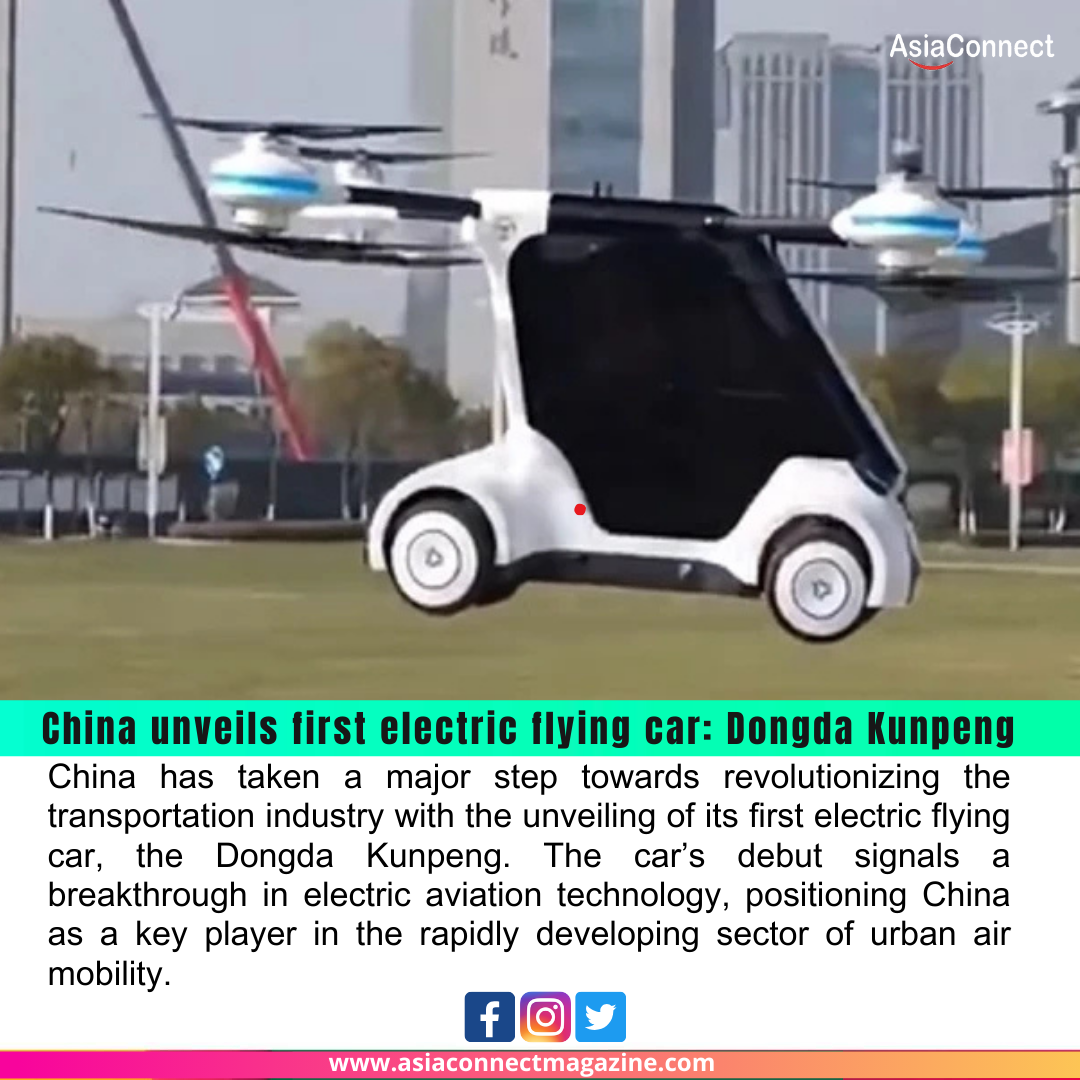China has taken a major step towards revolutionizing the transportation industry with the unveiling of its first electric flying car, the Dongda Kunpeng. The car’s debut signals a breakthrough in electric aviation technology, positioning China as a key player in the rapidly developing sector of urban air mobility. This cutting-edge vehicle boasts a four-axis, eight-rotor configuration and is fully steerable, setting it apart from traditional vehicles and opening the door to a new era of sustainable, efficient, and futuristic transportation.
A Leap into the Future of Urban Air Mobility
The Dongda Kunpeng flying car is designed to bridge the gap between traditional road vehicles and aerial transportation, offering an innovative solution to urban mobility challenges. With traffic congestion becoming an increasing issue in megacities around the world, urban air mobility has emerged as a promising answer to ease transportation inefficiencies. The Kunpeng’s electric-powered flight system offers a cleaner and quieter alternative to traditional combustion engine-based vehicles, potentially transforming city landscapes and transportation networks.
This electric flying car’s design is a perfect example of how engineering and innovation are converging to address some of the most pressing challenges in urban mobility. The flying car can travel both on the ground and in the air, providing unprecedented versatility for different environments. Its hybrid design makes it suitable for both short-distance city commutes and the possibility of future long-haul flights.
A Technological Marvel: The Four-Axis, Eight-Rotor Configuration
The Dongda Kunpeng features an advanced four-axis, eight-rotor configuration, which is integral to its aerial performance. The eight rotors work in tandem to provide vertical lift and precise control during flight, allowing the vehicle to hover, take off, and land vertically (VTOL). This means the vehicle can take off and land in relatively small spaces, making it ideal for urban environments where space is at a premium.
The four-axis configuration gives the Kunpeng an exceptional level of stability and maneuverability in the air. With the ability to fully steer the vehicle during flight, it offers a high degree of control, ensuring that the pilot can navigate both in the air and on the ground. This makes it a promising alternative to traditional aircraft, which typically require large, dedicated runways for takeoff and landing. By utilizing electric power, the Dongda Kunpeng offers a cleaner, more sustainable option compared to fossil-fuel-powered planes or helicopters.
Sustainability and Environmental Benefits
One of the standout features of the Dongda Kunpeng is its fully electric propulsion system. Electric vehicles (EVs) have become central to efforts to reduce carbon emissions and tackle climate change, and the introduction of electric flying cars is poised to extend these benefits to the aviation industry. By leveraging electricity rather than fossil fuels, the Kunpeng can contribute to reducing air pollution and minimizing the carbon footprint associated with traditional air and ground transportation.
Furthermore, electric flying cars like the Dongda Kunpeng offer the potential for quieter travel. With fewer moving parts and no traditional combustion engines, these vehicles could help alleviate noise pollution, particularly in urban areas where noise from road traffic and air traffic can be disruptive.
What the Future Holds for Flying Cars
The Dongda Kunpeng is not just a technological breakthrough—it marks the beginning of what could become a major shift in how people think about transportation. The development of electric flying cars is still in its early stages, and it may take several years before they are ready for widespread commercial use. However, the unveiling of the Kunpeng demonstrates that the future of mobility is rapidly evolving, and we are inching closer to the realization of flying cars as a practical, everyday mode of transportation.
As advancements in electric propulsion, battery technology, and air traffic management systems continue to progress, flying cars may become a common sight in our skies, offering a revolutionary approach to solving traffic congestion, reducing emissions, and reshaping urban transportation networks.
Conclusion
China’s unveiling of the Dongda Kunpeng flying car is a milestone in the development of electric urban air mobility. Featuring cutting-edge technology like the four-axis, eight-rotor design and fully steerable flight capabilities, the Kunpeng represents the future of transportation. As we look ahead, this electric flying car could play a central role in creating more sustainable, efficient, and dynamic transportation systems in cities around the world. The Dongda Kunpeng has the potential to redefine how we move, not just on the ground, but in the air as well.





